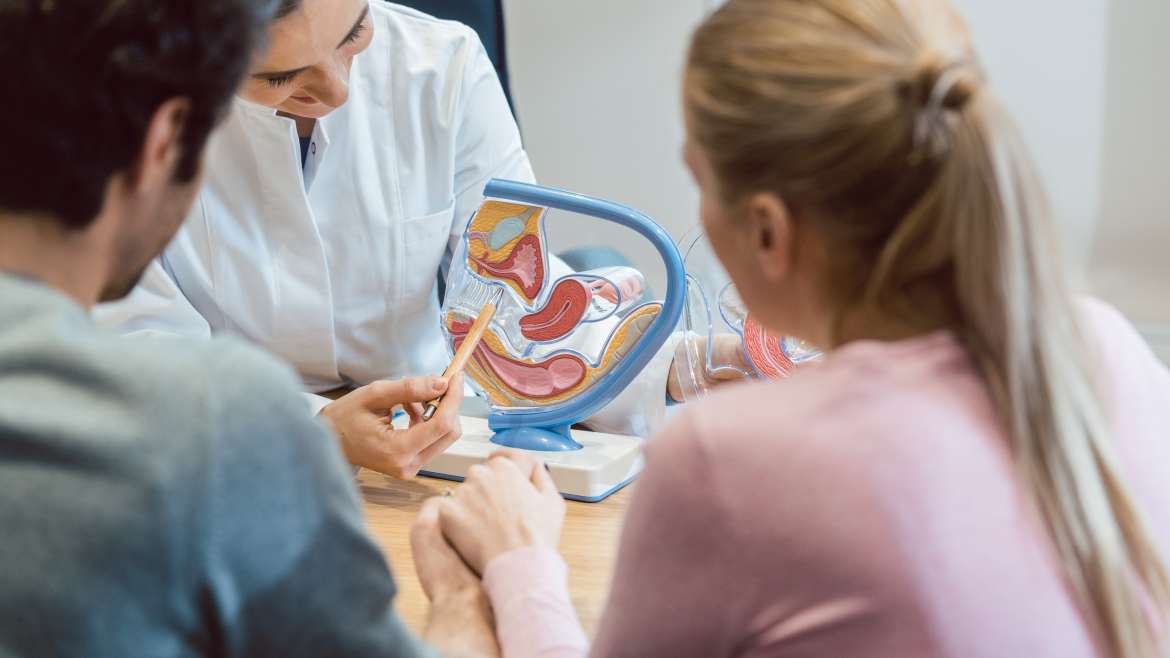Female Reproduction
The female reproductive system is a miraculous work of nature. It is designed to accommodate various functions including conceiving and giving birth. The key organs that form the female reproductive system are:
- Uterus, also known as the womb
- Ovaries
- Cervix
- Vagina
Overview
The female reproductive system matures during puberty (typically occurs between the age of 11 to 14 years) and this marks the start of a woman’s menstrual and reproductive cycle. The cycle will continue each month until menopause.
The Four Stages
There are four phases to a woman’s menstrual cycle, each cycle is crucial as it gives you the opportunity to conceive naturally and start a family.
- Menstrual phase – This phase consists of shedding of the uterine lining. This only occurs in the event that an egg, also known as an ovum, is not fertilized.
- Follicular phase – This phase starts on the first day of your period whereby your body releases follicle-stimulating hormones (FSH) to stimulate your ovaries to produce follicles. These follicles contain an egg in each of them. This phase will end when you begin to ovulate.
- Ovulation phase – Your body then moves on to the ovulation phase where the ovary releases a matured egg that will travel through the fallopian tube to reach the uterus. This is the optimal time for fertilisation.
- Luteal phase – This is the post ovulation phase, which typically lasts for about two weeks. During this phase a corpus luteum (a structure that releases progesterone and estrogen) is formed in the ovary and this is essential for conception and a successful pregnancy.
The Importance of Corpus Luteum
It is possible to have a corpus luteum defect and this can affect the chances of conceiving naturally. A corpus luteum defect occurs when there is not enough progesteron being produced. Without progesterone, the endometrium will not thicken and ultimately, the fertilised egg is unable to implant to the uterus. This defect can also be caused by medical conditions such as:
- Endometriosis
- Perimenopause
- Polycystic Ovarian Syndrome (PCOS)
- Stress
- Thyroid disorders
There are several symptoms linked to corpus luteum defect such as spotting, infertility and early pregnancy loss.
A fertility specialist will be able to diagnose if you have a corpus luteum defect, which may be preventing you from conceiving naturally. Nonetheless, do not lose hope. With the help of medical treatment and/or medications, it is possible for you to conceive the child of your dreams.
Male Reproduction
Unlike the female reproductive system, most of the organs of the male reproductive system are located outside of the body. The male reproductive system consists of:
- Testicles
- Prostate
- Penis
- Urethra
Overview
The purpose of the male reproductive system is to produce male sex hormones and semen, which carry genetic material, to be transported. These hormones are responsible for the development and maturation of a male during puberty (which typically begins between the ages of 9 to 15).
The Male Reproductive System
There is no doubt that every organ in the male reproductive system plays an essential role in order to make conception possible. The external structures of the male reproductive system include:
- Penis – This male organ is used during sexual intercourse and becomes a channel for semen to flow from the male reproductive system to the female reproductive system, via the urethra. The penis is divided into three parts which are the root, body and shaft. It is surrounded by thousands of tissues that are filled with blood vessels. When a man reaches climax, he will expel semen (containing sperm).
- Testicles – The testicles are a pair and they are oval-like shaped, similar to an egg. Testicles or also known as testes are responsible for producing testosterone. This hormone generates sperm and helps every man to naturally develop their physical characteristics such as muscle mass and hair growth.
- Scrotum – The scrotum is sac of skin that contains the testicles. It hangs behind the penis and has many nerves and blood vessels connected to it. The scrotum is responsible for controlling the temperature of the testicles and creating a good environment for sperms to be produced.
The internal organs of the male reproductive system consist of:
- Urethra – The urethra is a tube that transports semen from the male reproductive system to the female’s via a process known as ejaculation. In addition, the urethra also carries urine from the bladder to be excreted.
- Epididymis – This is a convoluted tubule that is found behind each testicle. The role of the epididymis is for transport, storage and bringing the sperm to maturity.
- Vas deferens – This is a long tube that carries sperm from the testes to the seminal vesicle. The main function of the vas deferens is transport.
- Seminal vesicle – This part of the male reproductive organ produces a type of fructose (sugar) that provides sperm the nourishment and energy that it needs to fertilise an egg.
- Prostate gland – The prostate gland is a walnut-sized organ that adds fluid to semen as well. The fluid that the prostate produces helps to nourish the sperm.
The three essential hormones
The male reproductive system relies mainly on hormones to regulate the activity of its cells and organs. There are three important hormones in a man’s body that are responsible for sperm production. They are:
- Testosterone
- Luteinising hormone
- Follicle-stimulating hormone
Ultimately, the male reproductive system’s main purpose is to produce healthy sperm and to transport these cells to a woman’s reproductive tract to make conception possible.



